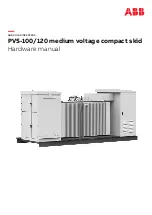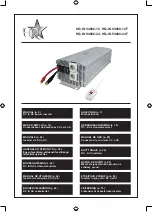
7.3 Special Conditions
7.3.1 Aggressive Environments
CAUTION
Do not install the frequency converter in environments
where liquids, particles or gases are in the air that would
impact and damage the electronics. Unless the necessary
measures are taken to protect the frequency converter,
there is a risk of stoppages, which reduce the service life
of the frequency converter.
Aggressive gases, such as sulphur, nitrogen and chlorine
compounds, together with high humidity and temperature,
facilitate possible chemical processes on the components
of the frequency converter. These chemical processes
quickly impact and damage the electronics. In these areas,
cabinet fitting with fresh-air circulation in the cabinet is
recommended, thereby ensuring that aggressive gases are
kept away from the frequency converter.
NOTICE
Fitting of frequency converters in aggressive
environments increases the risk of stoppages, in addition
to considerably reducing the service life of the unit.
Before installing the frequency converter, check if there are
liquids, particles or gases in the air. This can be done by
looking at existing installations in the same environment.
Typical indicators of harmful airborne liquids are water or
oil on metal parts or corrosion of metal parts. Too many
dust particles are typically observed on top of installation
cabinets and on existing electrical installations. Indicators
of aggressive gases in the air are black copper rails and
cable ends on existing electrical installations.
7.3.2 Derating for Ambient Temperature
The ambient temperature measured over 24 hours should
be at least 5
°
C lower than the max. ambient temperature.
If the frequency converter is operated above 45
°
C, the
continuous output current should be decreased.
7.3.3 Derating for Low Air Pressure
Above 1,000 m the ambient temperature or max. output
current must be derated.
For altitudes above 2,000 m, contact Danfoss regarding
PELV.
7.3.4 Derating for Running at Low Speeds
When a motor is connected to at frequency converter,
check that the cooling of the motor is adequate.
A problem may occur at low speeds in constant torque
applications. Running continuously at low speeds – below
half the nominal motor speed – may require additional air
cooling. Alternatively, select a larger motor (one size up).
7.3.5 Derating for Long Motor Cables
The frequency converter has been tested using a 75 m
unscreened/unarmoured cable and a 25 m screened/
armoured cable and has been designed to work using a
motor cable with a rated cross-section. If a cable with a
larger cross-section is required, it is recommended to
reduce the output current by 5% for each step the cable
cross-section is increased. (Increased cable cross-section
leads to increased capacitance to ground, and thus to an
increased earth leakage current).
7.3.6 Derating for High Switch Frequency
The frequency converter automatically derates the rated
output current I
VLT,N,
when the switching frequency
exceeds 4.5 kHz.
In both cases, the reduction is carried out linearly, down to
60% of I
VLT,N
.
Specifications
Quick Guide
32
Danfoss A/S © Rev. 2014-03-18 All rights reserved.
MG28M202
7
7
Содержание VLT 2800
Страница 1: ...MAKING MODERN LIVING POSSIBLE Quick Guide VLT 2800 www danfoss com drives...
Страница 2: ......



































